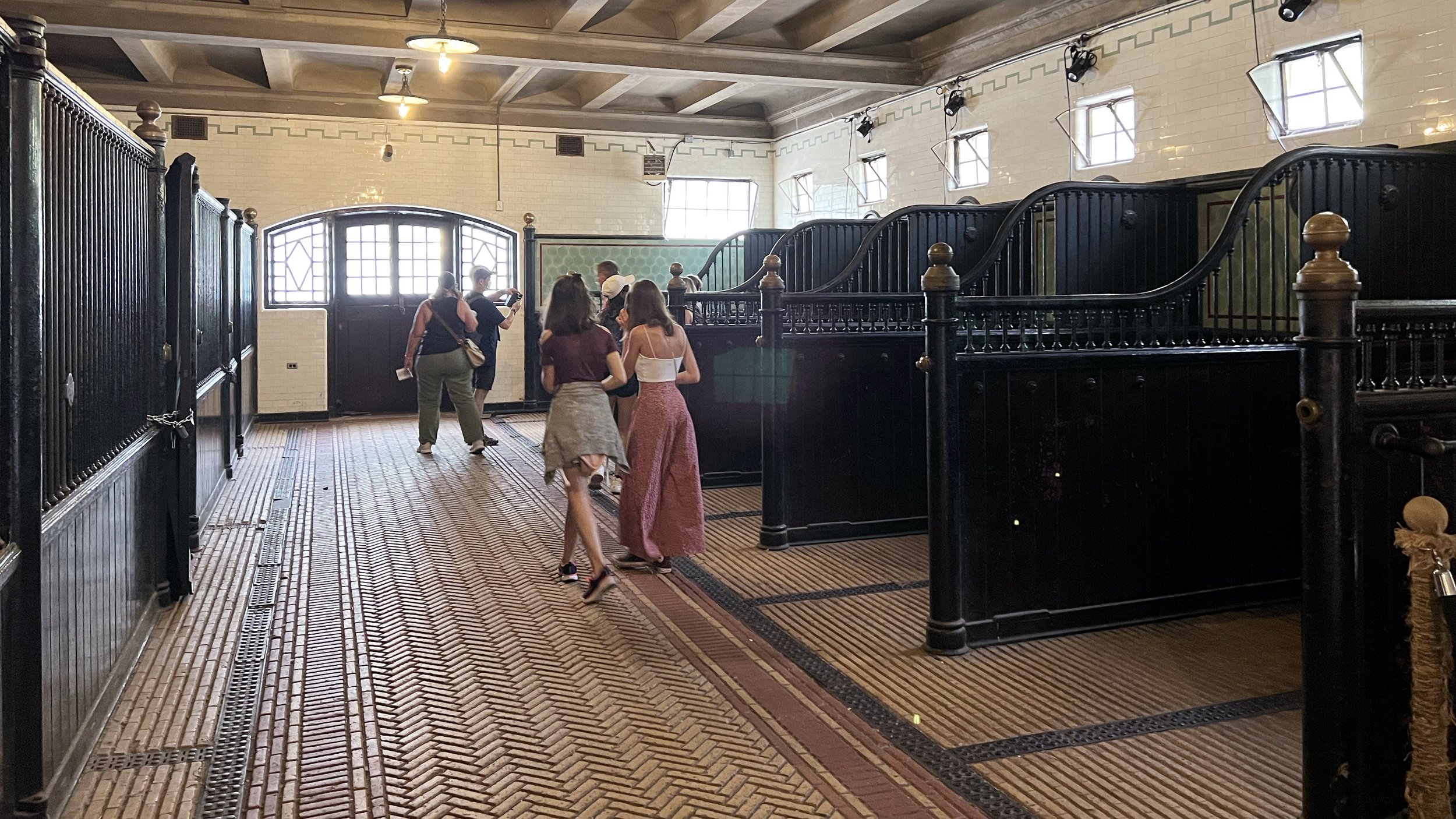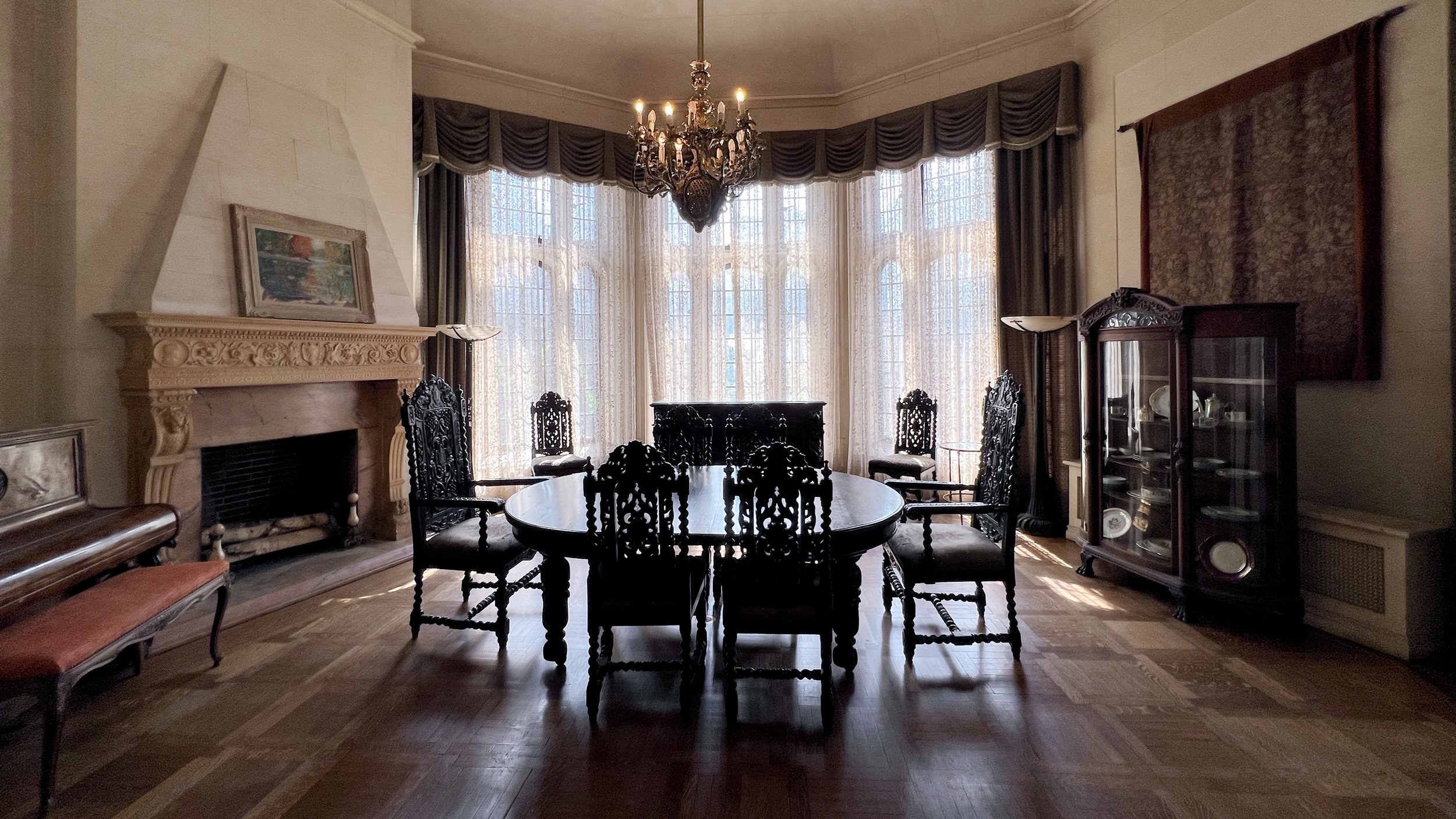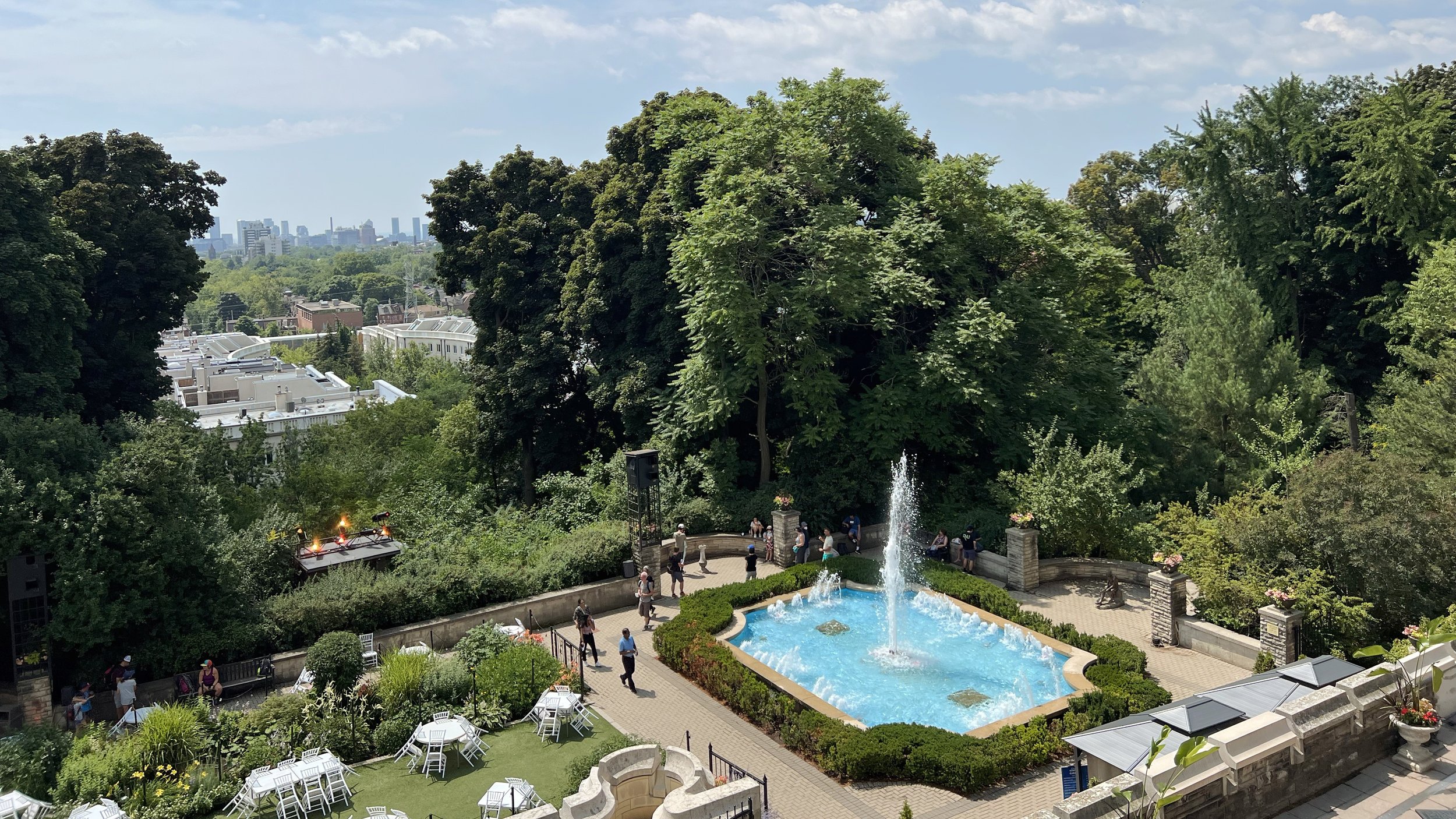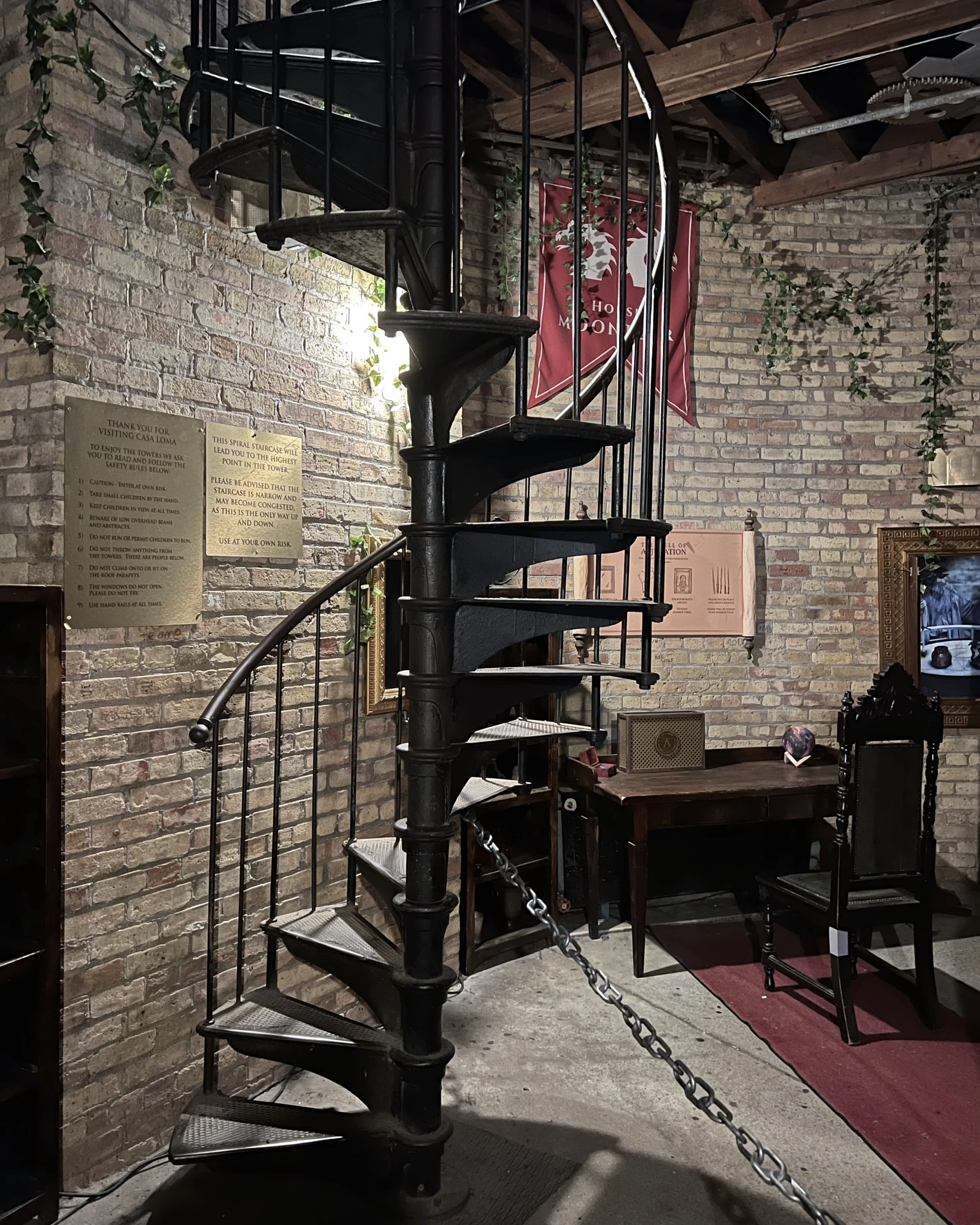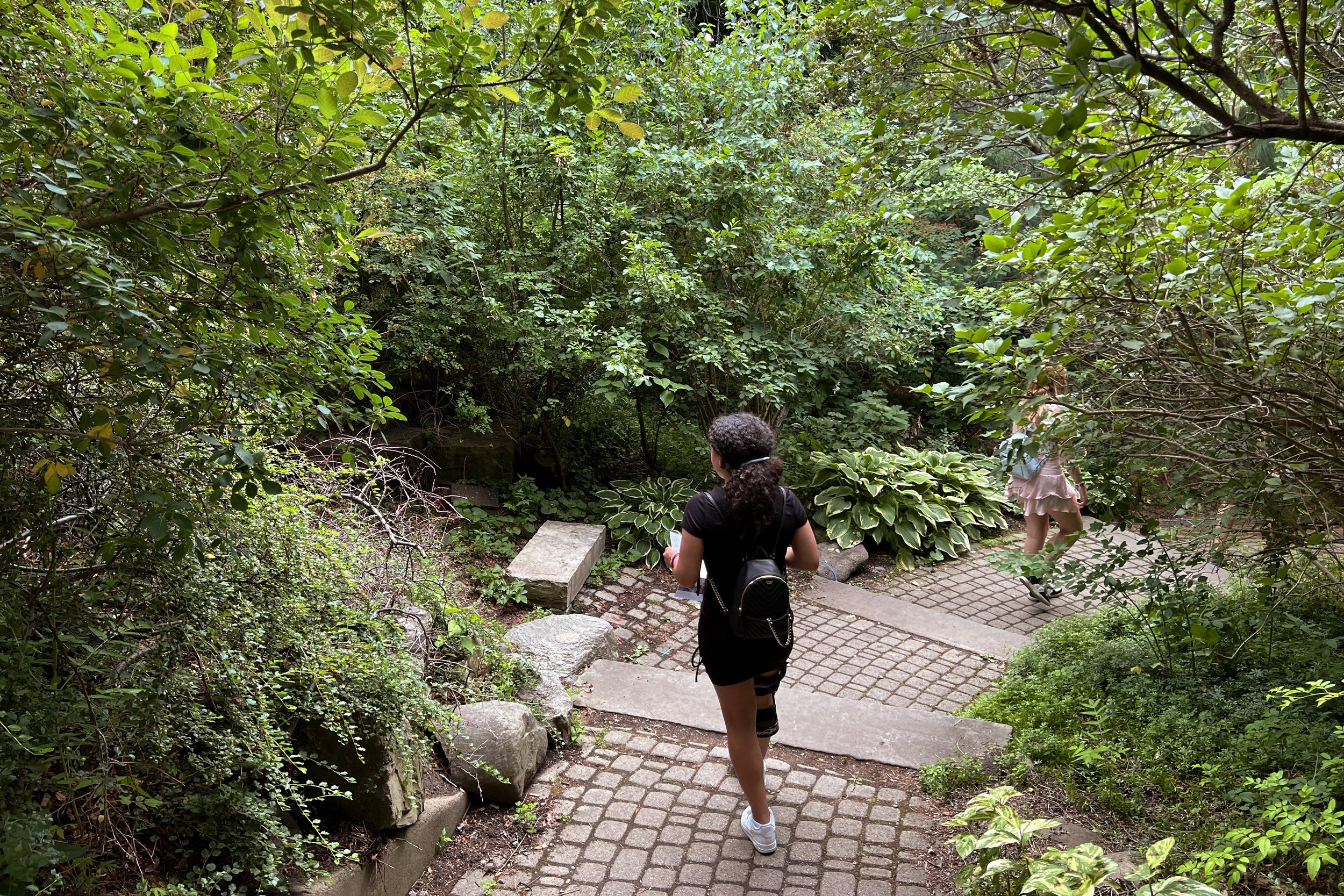Toronto, Tuesday, 19-Jul-2022
/Another full conference day for Melody, and I went to a castle. We both avoided the rain but not the heat.
The rain we heard overnight sounded heavy at times, but when we looked outside, there weren't huge puddles. Perhaps that it just sounded louder on the trees than we expected. It did sprinkle a bit as we walked to breakfast, but it wasn't even enough for us to consider jackets (not to mention it was getting warm), let alone pulling up our hoods.
We've fallen into quite a routine in the morning, but one change is now Melody will occasionally see someone from the conference at breakfast, so we'll chat for a bit. There are also more people in line than when we first showed up, and several show up just before service begins.
Melody's schedule for the day was to go to book discussions in the morning, have lunch there, then go to a pre-concert talk by a pianist whom she would be hearing that night as part of a music track at her conference.
Not long after Melody left for the morning, I bought a ticket for Casa Loma, then got on the subway to go in the direction opposite Union Station for a change. We knew it would be very hot, so I packed some water in my bag.
Casa Loma
Casa Loma is an early 20th-century castle built by Sir Henry Pellatt as a home for him and his wife Mary. Pellatt was a financier who built a large fortune in railroads and hydroelectric power. However, the government thought electric power should be free, so they appropriated the power plant in which Pellatt and two other men had invested a lot of money.
Pellatt losing income from the hydroelectric plant was bad for him. On top of that, taxes on Casa Loma (still under construction) were also raised twentyfold, so Pellott had to find other sources of income. His aircraft factory was appropriated by the government because of WWI. Almost bankrupt, Pellett and his wife had to abandon the castle before it was completed.
In later years, Casa Loma was operated as a hotel, but that only lasted a few years due to unpaid taxes. It sat empty until the Kiwanis Club began to run it as a tourist attraction. After the Kiwanis Club used the revenue to cover operational shortfalls (it was supposed to use net revenues for upgrades), the city resumed management. Eventually, an operational agreement was put into place with an entertainment group.
I picked up the audio guide, which was distributed in the basement. Since I was already down there, I began my tour on that level. Conveniently, the short movie was about to begin. It described the history of both Pellett and Casa Loma. Of course, several of those themes and stories would be repeated on the audio tour, but it was good to see everything in context.
Part of Casa Loma that Pellett wasn't able to complete was the pool, which now houses the theatre. He was, however, able to complete the garage and stables, but they were located across a road. He tried but failed to get the city to close the road, so he built a long tunnel between the two parts of his home. It's a pretty normal tunnel now, but in its day it was decorated and well-maintained.
Several movies have used Casa Loma during filming, and posters of many are all around the castle and in the tunnels. Under the stables and garage is a group of rooms where movie scenes are recreated.
I went back to the castle and started looking around the main floor. The rooms are of a scale to fit the grandness of the castle. The audio guide noted that the Pellotts didn't have enough books to fill the library, which could be a handy excuse to leave gaps in the shelves.
A small dining area was originally used as a breakfast room or for small dinners. For large dinners, it was used as a staging area. Dishes would be put there from the kitchen, and the servers would then take the dishes across the hall to the guests.
A large conservatory is at one end of the long main hall and has a large, stained-glass dome in the ceiling. So the Pelletts could enjoy it all day, the dome is lit from behind with lightbulbs. Pellett enjoyed gardening and cultivated orchids and chrysanthemums in greenhouses across the road near the stables. In winter, the plants would be carried through the tunnel into the conservatory.
Pellett's study is also on the main floor. It has a fireplace with panels on either side that conceal secret passageways, one to the second floor, and the other to the basement.
In the Great Hall is the console for a large Wurlitzer organ which is not original to the house (the original organ was sold when Pellett was trying to avoid bankruptcy). The Wurlitzer was originally in Shea's Hippodrome until its demolition in the late 1950s. It was moved to Maple Leaf Gardens for several years until the Kiwanis moved it into Casa Loma into the old, existing organ chambers. In addition to the organ, there were pianos in many of the rooms.
After a quick break for lunch, I proceeded to the second floor, stopping on the mezzanine on the way. It had a large window view across the street toward the stables and garage.
The second floor had guest rooms and suites for Henry and his wife. Henry's suite was a good size, but Lady Pellett had a larger suite. Both suites included washrooms with marble on the walls. Pellett's washroom had a shower that sprayed water from the sides in addition to the top.
I proceeded to the third floor, where the servants lived. There was also a passageway leading to the two towers, one on each side of the castle. The towers have spiral staircases you climb to get to the top, so you have to make sure no one is going in the other direction, since there isn't room to pass.
The Scottish Tower is enclosed, while the Norman Tower is open-air. You get great views from both. At night, Casa Loma hosts escape rooms in the towers, and you could see some of the puzzles and decorations while walking around.
The last thing I did at Casa Loma was walking around the gardens. The fountain and surrounding gardens felt small and close to the castle, but I wonder if other parts of the garden aren't open to the public. Also, the greenhouses were across the street, so perhaps Pellett owned land over there, presumably sold.
Having visited as much as I could, I turned in my audio guide and returned to the room.
Rest of the day
I decided to spend the afternoon relaxing, catching up on photos and journaling. I've found that I've not had as much time on this trip to keep up with those, so I've been prioritizing editing photos, then journaling. Uploading all of my photos (I upload many more than in these blog posts) is the lowest priority since I try to take the time to document each one.
Melody returned after her pre-concert talk, and when the time came, we went out to find dinner. We explained to the server that Melody had a time she needed to leave. Fortunately, the restaurant was quick anyway, but the server ensured that we got out on schedule. I walked Melody over to where she was meeting people, and then returned to the room.
Melody was familiar with many of the pieces performed. Coincidentally, I playu some of them; one I studied, the others I play casually. She said the performer was pretty young, and there were parts of the concert where you could tell he will eventually grow into his style.
The weather was still hot, so we had closed the windows and pulled the shades during the day. For the night, the windows got open and shades were put up to let in the air that was finally cooler than the room.



